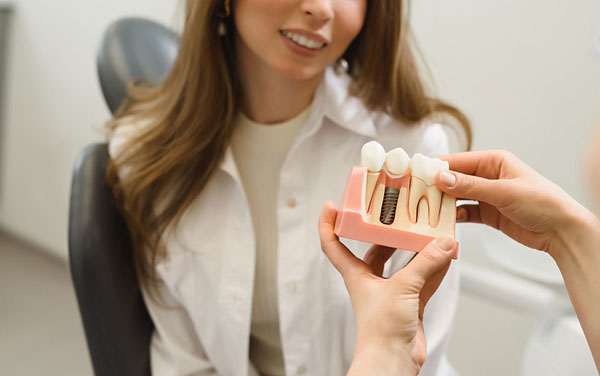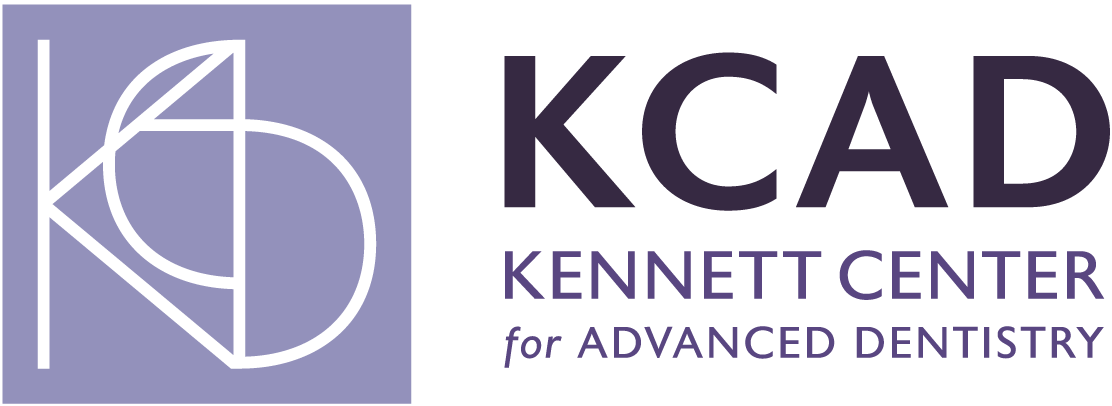Dental Implant Supplemental Procedures in Kennett Square, PA
What Are Supplemental Procedures? Dr. Patellis Explains
Supplemental procedures refer to additional steps that may be necessary to prepare the mouth for the placement of dental implants. These procedures are designed to address specific issues that can affect the success of the dental implant placement, such as insufficient jawbone density, issues with the gums, or other factors that may impact the stability and longevity of the implant. Some common examples of supplemental procedures include bone grafting, sinus lifts, and ridge augmentation.
Supplemental procedures aren’t always necessary, and the need for them will be determined on a case-by-case basis by your oral surgeon or periodontist. The risks, benefits, and healing times of each procedure must be discussed before implant placement.
In some cases, dental implants may not be the best tooth replacement. To find out more, schedule your consultation with our Kennett Square dentist by calling 610-444-6311. We also proudly serve patients coming from West Chester, Chadds Ford, Longwood, and the surrounding areas.

What Does Dental Implant Surgery Entail?
Dental implant surgery is a sophisticated procedure that involves placing artificial tooth roots into the jawbone to support a dental prosthesis, such as a crown or bridge. This surgery is typically performed by an oral surgeon or a dental specialist with advanced training in implant dentistry.
The journey begins with a consultation, where the oral surgeon evaluates the patient’s overall health to determine if they are a suitable candidate for dental implant surgery. During this consultation, the surgeon will take X-rays and impressions of the patient’s teeth to develop a personalized treatment plan.
On the day of the surgery, local anesthesia is administered to numb the area where the implant will be placed. The surgeon then makes an incision in the gum tissue and creates a precise hole in the jawbone for the implant. The implant is carefully inserted into this hole and secured in place.
Following the placement of the implant, the incision is closed, and the healing process, known as osseointegration, begins. This crucial phase can take several months, during which the implant integrates with the jawbone to form a stable foundation. During this period, patients are often provided with a temporary prosthesis to maintain functionality and aesthetics.
Once the implant has fully healed, the surgeon attaches a connector, called an abutment, to the implant. This abutment serves as the support for the final prosthesis, which is typically a crown or bridge, completing the dental implant procedure.
Dental implant surgery boasts a high success rate of over 95%. However, like any surgical procedure, it carries certain risks and potential complications, which should be thoroughly discussed with your oral surgeon.
Bone Grafting and Bone Graft
A Bone grafting procedure is used when there’s not enough healthy jawbone present to support the implant post. Bone graft material plays a crucial role in this process by facilitating the integration of the graft with the patient’s own bone, which is essential for the success of subsequent dental implants. During bone graft surgery, a small amount of bone is removed from another part of the body, such as the hip or the tibia, and placed in the jawbone to restore its strength.
After a bone graft, patients will need to carefully follow their dentist’s post-operative instructions to ensure a successful recovery. Instructions may include avoiding hard or crunchy foods, taking any prescribed medications, and maintaining good oral hygiene at home.
While you recover, the bone graft will integrate with the existing bone, creating a strong foundation for dental implants or other tooth replacement options.
Sinus Lift
Sinus lifts are typically necessary when the upper jaw has too little bone height or the sinuses are too close to the jaw for traditional implant placement. The use of bone graft material in sinus lifts is crucial as it elevates the sinus lining and fills the space between the sinus and jaw bone. The sinus membrane is lifted during this procedure, and bone is added to the upper jaw to provide support for the implant.
The sinus is an air-filled cavity located behind the cheekbones and above the upper back teeth. When these teeth are lost or extracted, the sinus expands and causes the bone to become thinner, making it difficult to place dental implants.
After a sinus lift, patients may experience bruising, swelling, and minor discomfort. However, these symptoms are easily manageable with medications and plenty of rest. Make sure to follow your dentist’s instructions for post-op care.
Ridge Augmentation
Ridge augmentation is used to improve the chances of successful implant placement. When the jawbone has been resorbed, or worn away, leaving a narrow or uneven ridge in the jaw, ridge augmentation may be necessary. During ridge augmentation, bone is added to the jaw to build up the ridge and create a stable foundation for the implant. Ridge augmentation is a part of restorative dentistry, which focuses on specialized treatments to ensure successful dental implant outcomes.
Recovery time for ridge augmentations varies depending on the extent of the procedure. Patients may experience swelling or minor discomfort after the procedure, but symptoms can be easily managed with rest and medications.
Risks and Complications of Dental Implants in Kennett Square, PA
While dental implant surgery is generally safe and effective, it is not without its risks and potential complications. Understanding these risks is crucial for anyone considering this tooth replacement option.
One of the most common risks is infection, which can occur at the implant site. While most infections can be treated with antibiotics, severe cases may require the removal of the implant. Nerve damage is another potential complication, which can result in numbness or tingling in the teeth, gums, or lips.
Sinus problems can arise when implants placed in the upper jaw protrude into the sinus cavity, leading to congestion or infection. Additionally, improper placement of the implant can cause bone loss in the jaw, compromising the stability of both the implant and surrounding natural teeth.
 In rare cases, the body may reject the implant, leading to implant failure. Gum disease around the implant can also cause inflammation and infection, jeopardizing the success of the implant. Furthermore, tooth decay on the teeth adjacent to the implant can create additional complications.
In rare cases, the body may reject the implant, leading to implant failure. Gum disease around the implant can also cause inflammation and infection, jeopardizing the success of the implant. Furthermore, tooth decay on the teeth adjacent to the implant can create additional complications.
General risks associated with any surgical procedure, such as bleeding, swelling, pain, dry socket, and bone fragments, are also present. It is essential to follow your oral surgeon’s post-operative instructions meticulously to minimize these risks.
Despite these potential complications, dental implant surgery remains a highly successful procedure. It offers a natural-looking and functional tooth replacement for patients with missing teeth. By adhering to your oral surgeon’s guidelines and maintaining excellent oral hygiene, you can significantly enhance the success and longevity of your dental implants.
Frequently Asked Questions
How long does it take to heal from a supplemental procedure?
Healing time can vary depending on the specific procedure, but bone grafting and sinus lifts can take several months to heal before a dental implant treatment can begin.
Are supplemental procedures always necessary?
No, supplemental procedures aren’t always necessary. Whether a supplemental procedure is needed before a dental implant treatment depends on the individual’s oral health. Some medical conditions may not require a supplemental procedure, while others may require one to achieve the desired implant results.
Will insurance cover the cost of supplemental procedures?
Whether insurance will cover the cost of a supplemental procedure depends on your insurance plan. Some insurance plans may cover the costs, while others may only partially cover it or not cover it at all. It’s best to check with your insurance provider for specific information about coverage for a particular supplemental procedure. It’s also a good idea to carefully review your insurance policy and understand any deductibles, copays, and other costs you may be responsible for.
Get Dental Implant Surgery Ready With Supplemental Procedures
Dental implant supplemental procedures are additional steps that may be necessary to prepare the mouth for the placement of dental implants. Learn more about supplemental procedures or dental implants with our Kennett Square dentist. Contact our dental office today at 610-444-6311 to schedule your appointment. We also proudly serve patients coming from West Chester, Chadds Ford, Longwood, and the surrounding areas.
